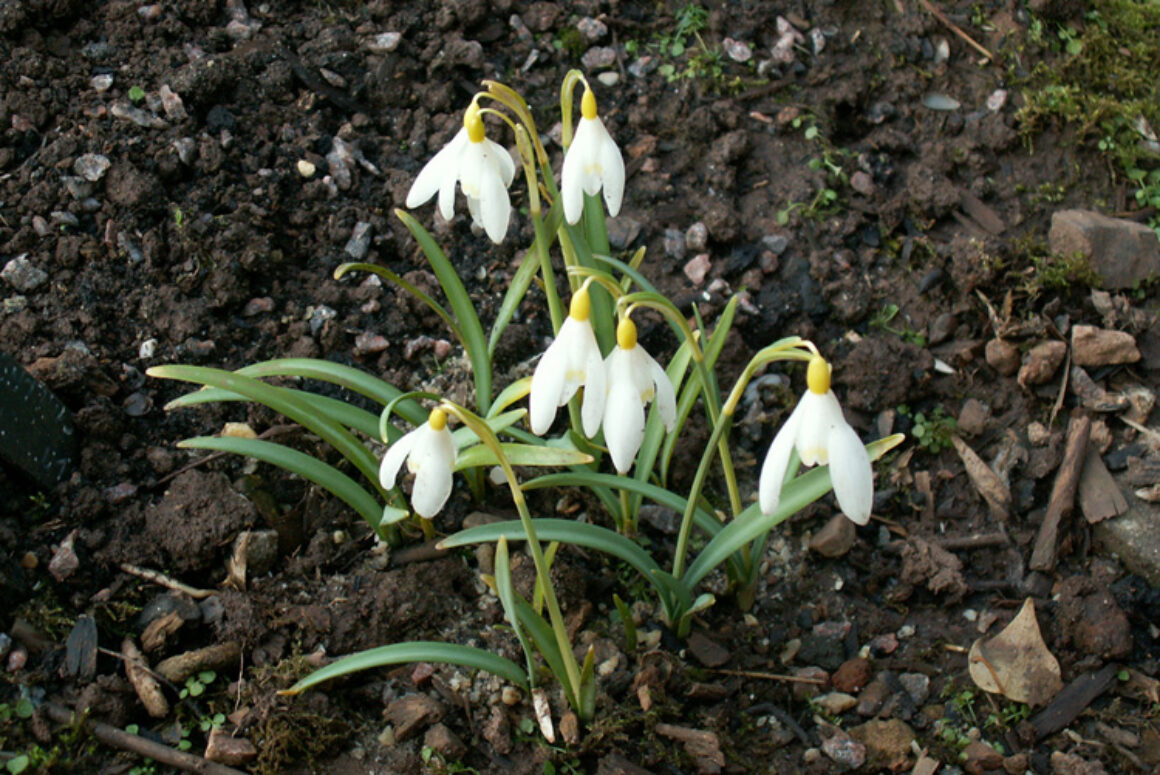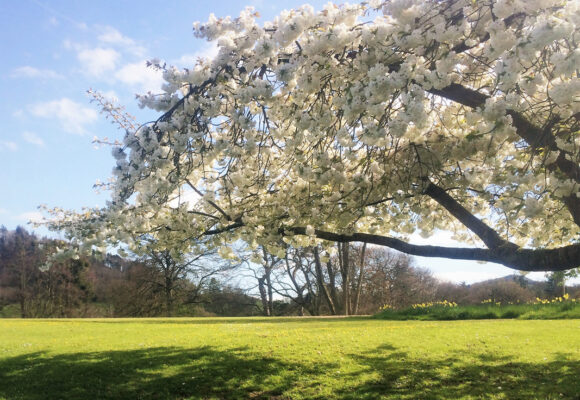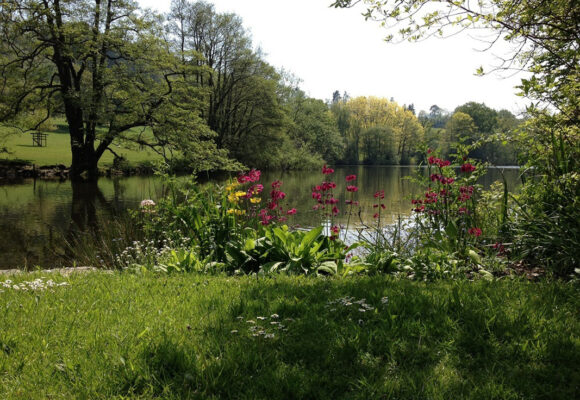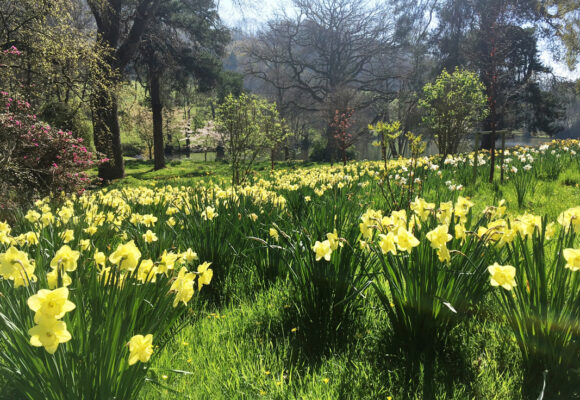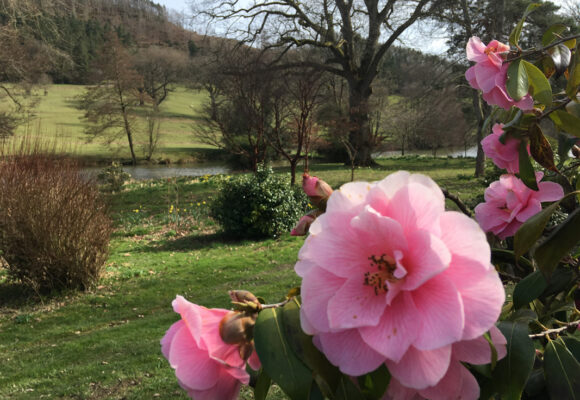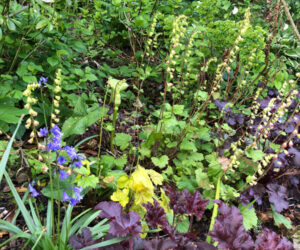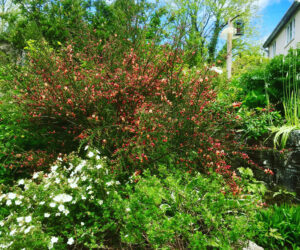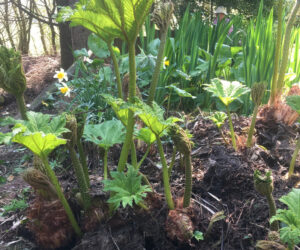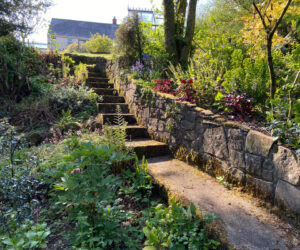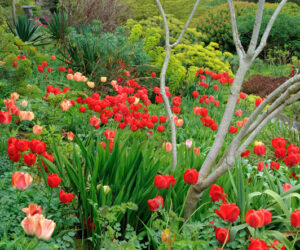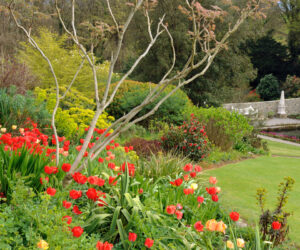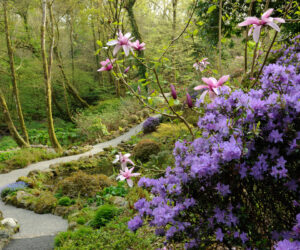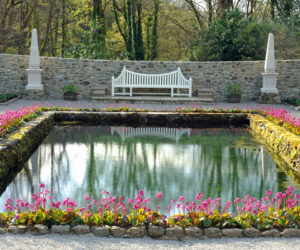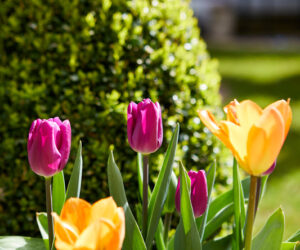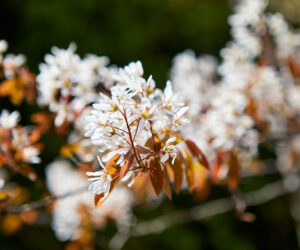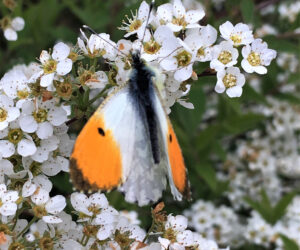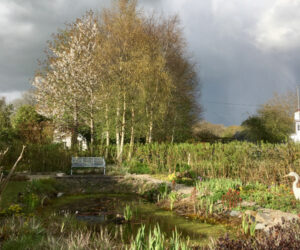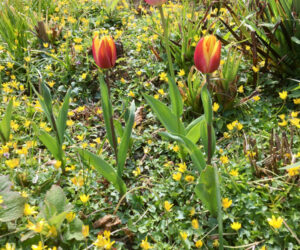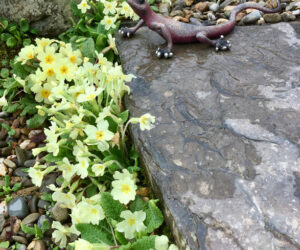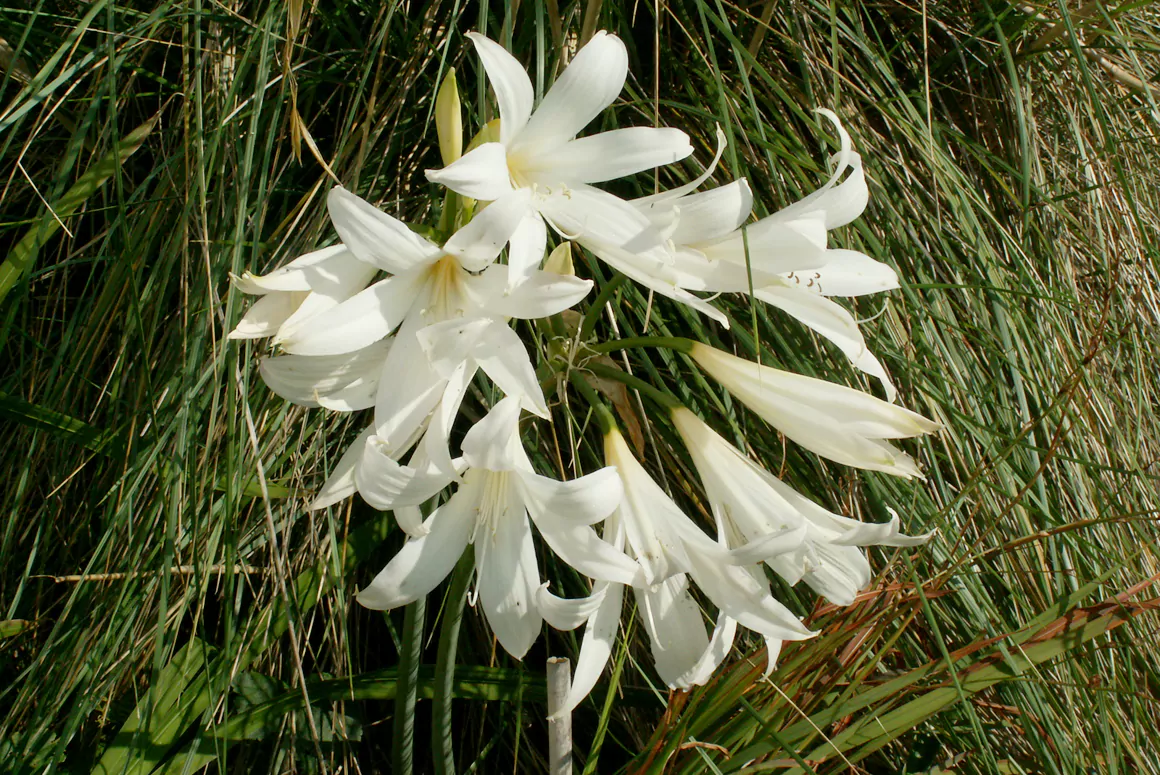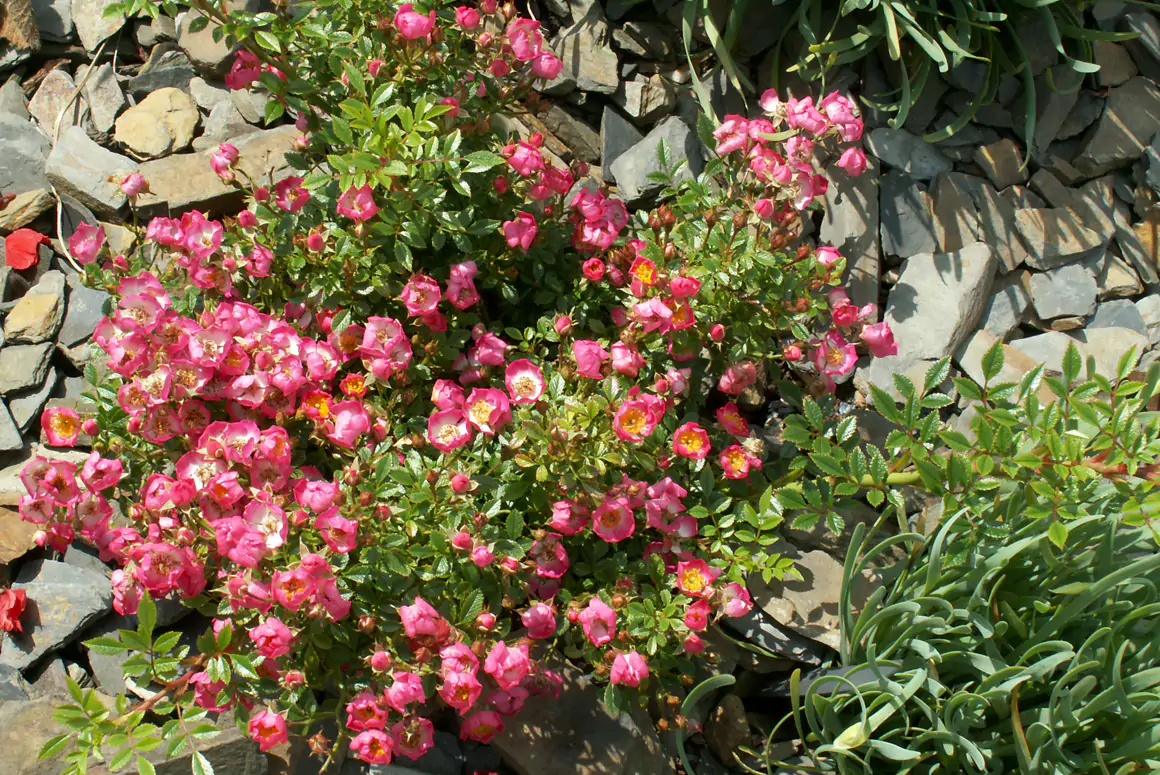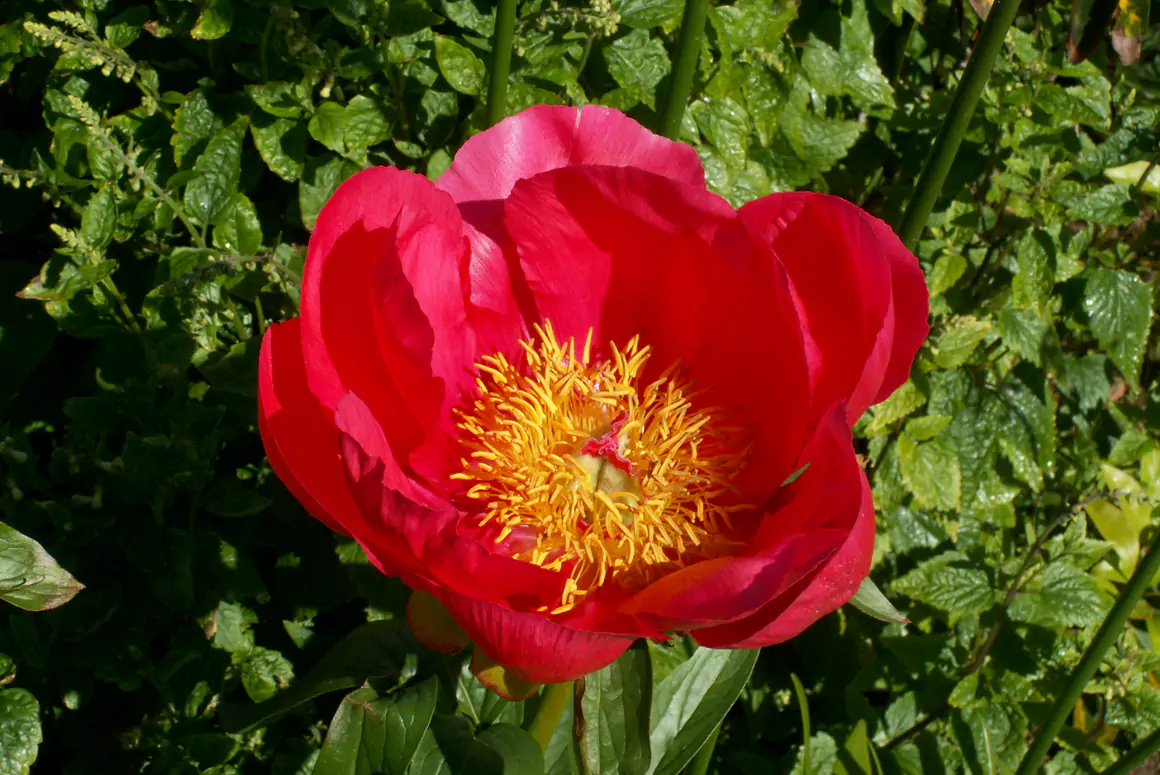![]()
This spring as it comes bursts up in bonfires green,
Wild puffing of emerald trees, and flame-filled bushes,
Thorn-blossom lifting in wreaths of smoke between
Where the wood fumes up and the watery, flickering rushes.
D.H. Lawrence (1885-1930)
Living on the South Wales coast has many advantages for the keen gardener, but at the moment, the winds of Storm Eunice are reminding me of its main disadvantage. However there are signs of spring everywhere in the garden and indeed snowdrops are now past their best. At the end of winter it is perhaps an appropriate time to reflect on some plants which have given pleasure at a sparse time for flowering delight.
I am not a galanthophile although I grow a few named selections amongst a few hundred assorted plants of unknown origin. Several years ago I hesitantly reached deep into my pockets and paid a considerable sum for a single bulb of Galanthus ‘Wendy’s Gold’. I have been repaid by a sixfold increase this year and the developing yellow ovaries and petal marks make it stand out from the crowd. It is as easy to grow as any other merely requiring a moist soil that does not dry out but its colour is much enhanced by planting in a sunlit position.
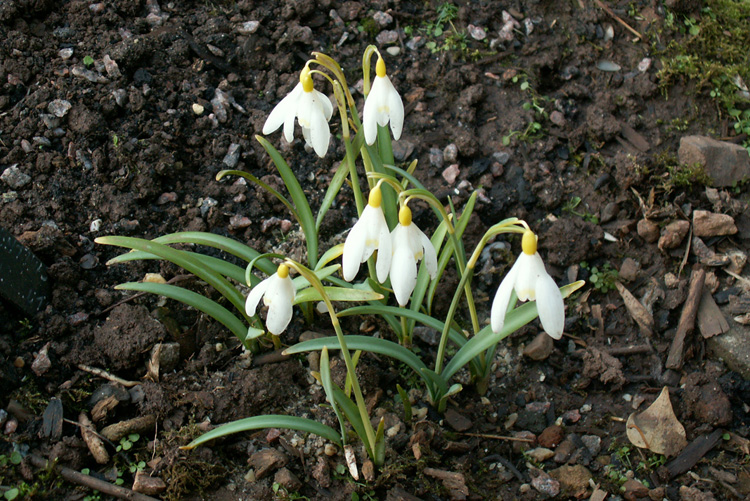
Some plants have a reputation for being difficult to grow and Daphne has acquired that epithet. My own experience is somewhat different and given adequate preparation and a suitable position my losses have been minimal. An outstanding plant in my garden is Daphne bholua ’Jacqueline Postill’ which provides both colour and wonderful scent for several of the darkest months of the year. It merely requires a reasonable soil and an open position to flower from December to early March. There are a number of selections available but the above has now suckered into a wonderful large 2 metre clump.
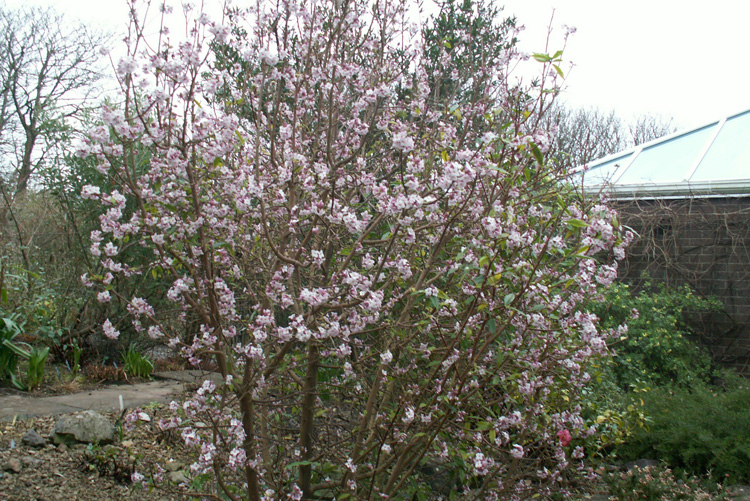
Camellias are relatively common plants in spring gardens, usually C. japonica or its multitude of hybrids. However I grow two selections of another species C. sasanqua ’Yuletide’, a profusion of rich red flowers with a golden crown of stamens and ‘Hugh Evans’ a rose-pink selection that are not commonly seen. C. japonica cultivars prefer a cool and shady situation, flowering in the spring whereas C. sasanqua requires a substantial amount of sunshine to produce a good show and starts to flower in late autumn and continues through the winter. Although C. sasanqua will tolerate a drier soil it prefers it moist. I grow both my selections against sunny fences to ensure flowering.
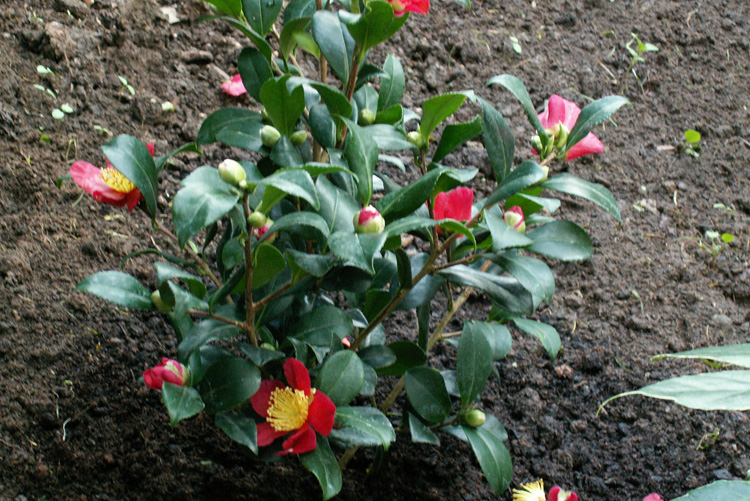
With the advent of spring the number of gardens opening under the National Garden Scheme is steadily increasing.
Listed in Tony Russell’s book ” The Great Gardens of Wales”, Bryngwyn Hall in Powys is a stunning grade ll listed 9 acre garden with 60 acres of parkland designed by William Emes. The house and gardens fell into dereliction from the late 1930’s until restoration commenced in 1989. Distinguished by many remaining plantings of trees and shrubs including rhododendrons, brought back from the Himalayas early colour is provided by, hammamelis, mahonia, daphnes, corylopsis and chimonanthus. There is a continuing show throughout spring with extravagant flowering shrubs complimented by bulbs and primulas. A new poison garden also intrigues and amazes visitors!
Bryngwyn Hall
Pen-y-Garn in Carmarthen is 1½ acres in an unusual setting within a former limestone quarry. Lovingly restored and developed over the last 10 years with much grown from seed, propagation and cuttings from friends’ gardens. There are 5 distinct areas including a shady area with woodland planting and ponds; organic no-dig kitchen garden; terraced borders and a wild garden with views across the old quarry workings.
Pen-y-Garn
Far north in Anglesey is Plas Cadnant Hidden Gardens, an early C19 picturesque garden, in a secret valley which is a plantsman’s paradise. The walled garden with topiary and the valley with waterfalls have all been restored over the last 25 years. There is an Alpheus water feature and a Ceunant (Ravine) walk which features unusual moisture loving alpines. A visitor centre and tearoom provide light refeshments.
Plas Cadnant Hidden Gardens
Images by Val Corbett
Sitting within a modern housing estate, 110 Heritage Park in Cardiff is an unexpected gem. Box topiary and brick edging throughout give the garden structure. A sunny patio has many pots containing tulips, and seasonal planting. On another small patio a relaxed seating area is surrounded by clematis and jasmine. Two Chinese warriors seem to have travelled from China to stand guard on a shady arbour covered in clematis, honeysuckle and ivy.
110 Heritage Park
Images by Phil Boorman
Sitting in rural Ceredigion the 6 acre smallholding Yr Efail is the result of 11 years hard work improving the original cottage garden by adding extensive vegetable beds, erecting polytunnels and planting nearly 2000 native trees. There are many quiet spaces to sit and reflect amongst the relaxed perennial planting, including a wildlife pond, bog and gravel gardens. Be inspired by the large productive vegetable plots, and greenhouse. Wander through the maturing, woodland and enjoy home-made teas incorporating homegrown fruit and vegetables.
Yr Efail
Every day is slightly longer than the one before and the steadily increasing warmth of the sunbathed soil is encouraging vigorous growth. Forget Covid and the dark days of winter and welcome the delights to come.
NGS Open Gardens
Welsh Country has two NGS open garden sections. The first ‘Open Gardens’ are gardens that are open on specific days and the ‘Long Term Open Gardens’ which are by appointment only. There is a search facility on each page so simply search for a garden name or an area of Wales (i.e. Swansea) you’d like to visit.


